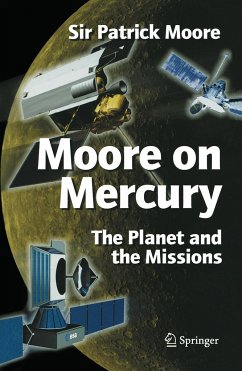
Dynamic Planet
Mercury in the Context of its Environment
Versandkostenfrei!
Versandfertig in 6-10 Tagen
113,99 €
inkl. MwSt.
Weitere Ausgaben:

PAYBACK Punkte
57 °P sammeln!
UNDERSTANDING THE PLANET MERCURY Thirty years have elapsed since the one and only mission to Mercury, Mariner 10, performed three ?ybys of the planet, capturing moderate-reso- tion (100 m at best) images of one hemisphere (45% of the surface) and d- covering that Mercury could be the only other terrestrial planet to have a global magnetic ?eld and core dynamo analogous to the Earth's. At the time of this writing, the MESSENGER mission to Mercury has been launched. We are still a couple of years away from the ?rst of the next ?ybys of Mercury, by MESSENGER, on its way to insertion into a nearly...
UNDERSTANDING THE PLANET MERCURY Thirty years have elapsed since the one and only mission to Mercury, Mariner 10, performed three ?ybys of the planet, capturing moderate-reso- tion (100 m at best) images of one hemisphere (45% of the surface) and d- covering that Mercury could be the only other terrestrial planet to have a global magnetic ?eld and core dynamo analogous to the Earth's. At the time of this writing, the MESSENGER mission to Mercury has been launched. We are still a couple of years away from the ?rst of the next ?ybys of Mercury, by MESSENGER, on its way to insertion into a nearly polar, but highly ellip- cal, orbit, seven years from launch. In the interim, a plethora of ground-based observations has been providing information on hitherto unseen aspects of Mercury's surface and exosphere. Furthermore, Mariner 10 data have been analyzed and reanalyzed as the technology for modeling and image processing has improved, leading to important breakthroughs in our understanding of Mercury and its environment. Thus, we are writing this book with the realization that we are in a time of transition in our understanding of the planet Mercury. Of particular interest to us in this book is the emerging picture of Mercury as a very dynamic system, with interactions between interior, surface, exosphere, and magne- sphere that have in?uenced and constrained the evolution of each part of the system.














